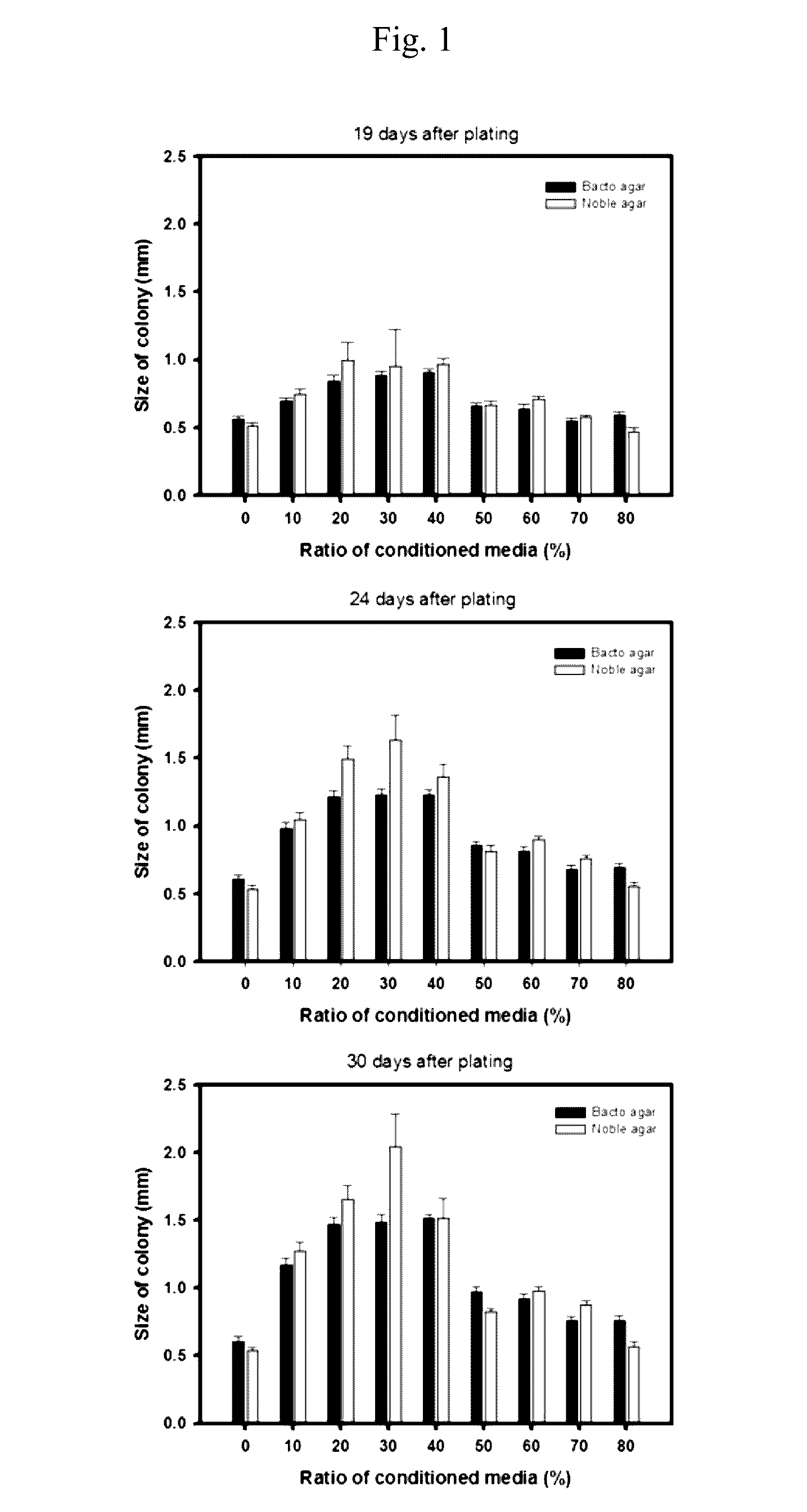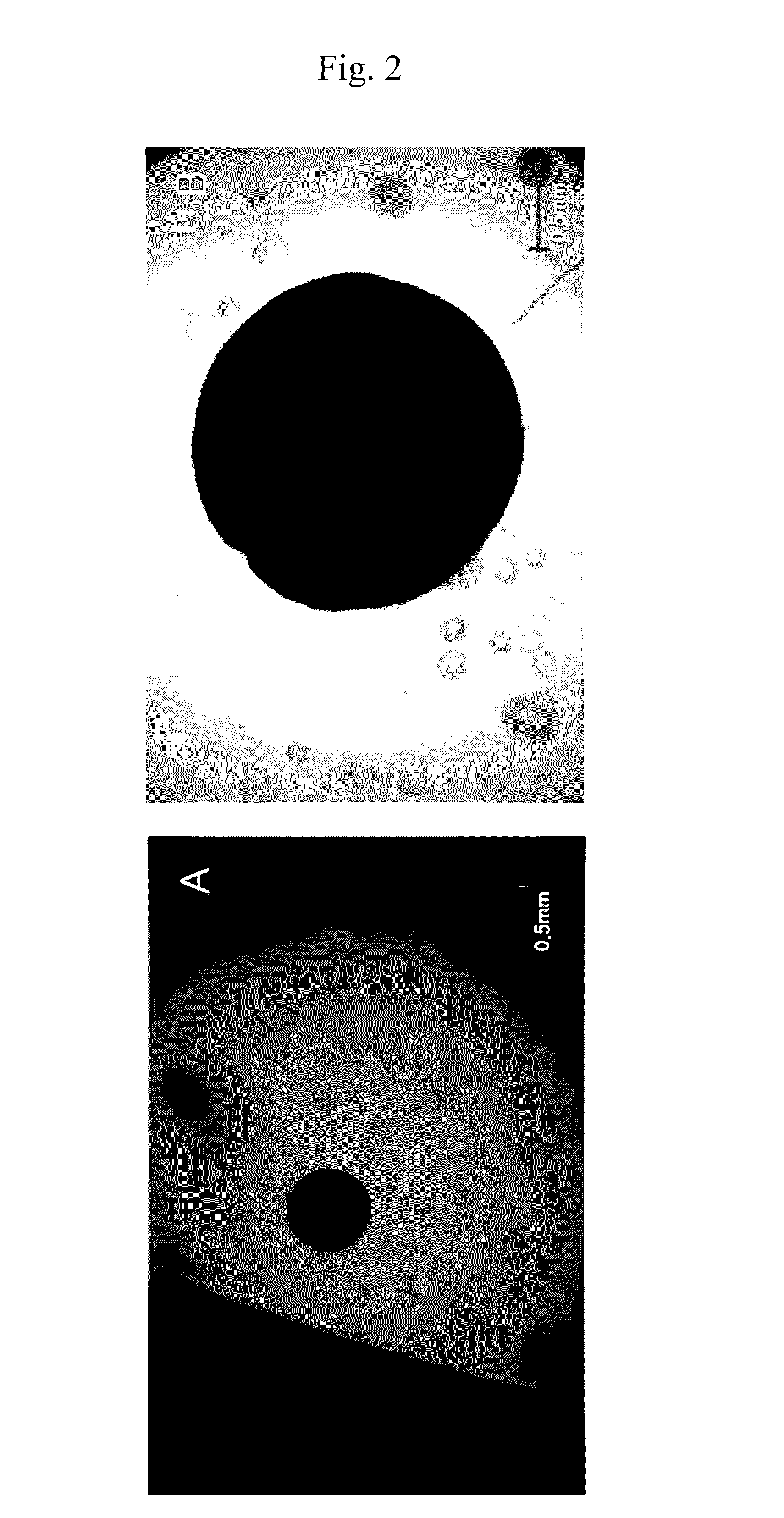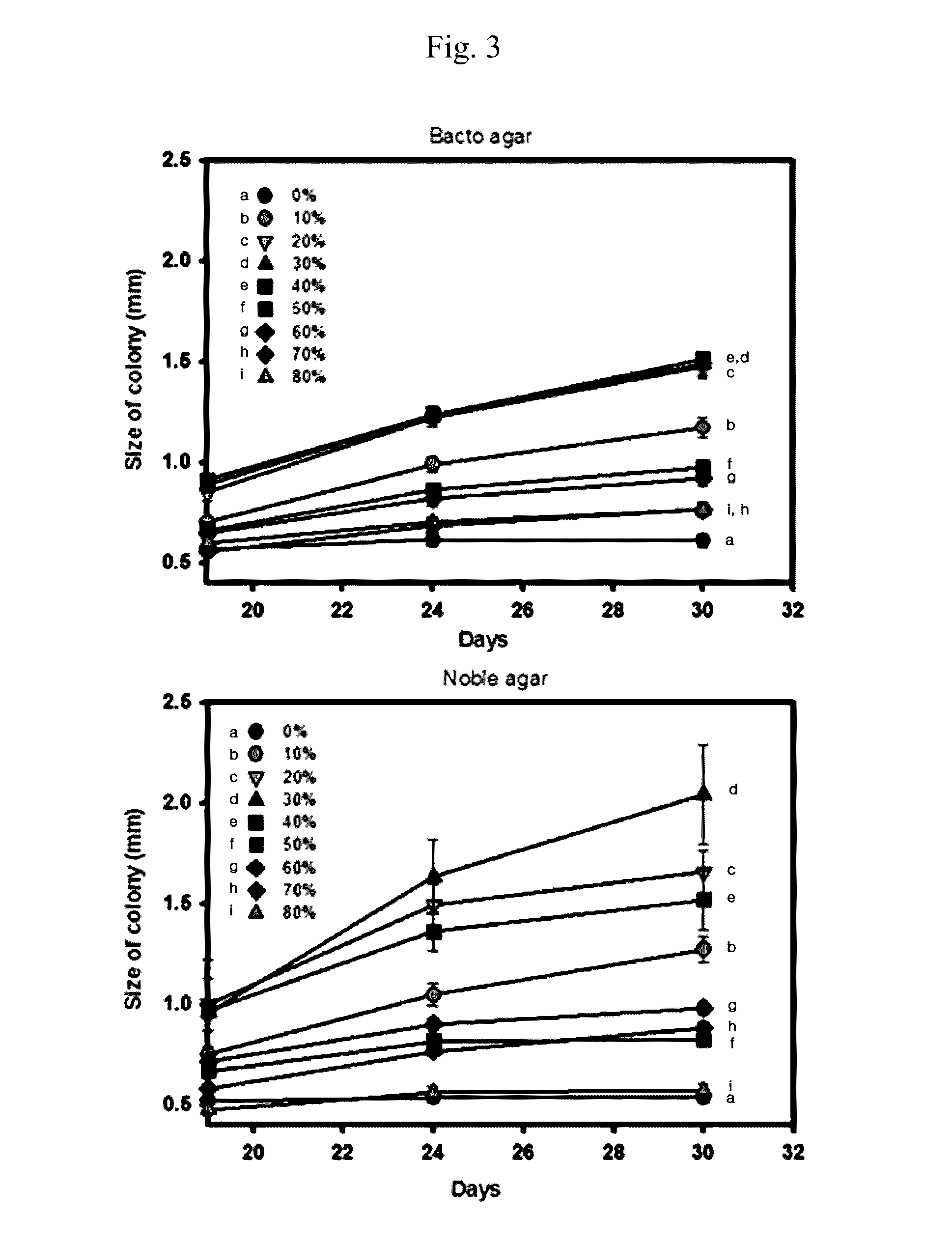Medium composition for culturing microalgae colony and use thereof
a technology of microalgae and medium composition, which is applied in the field of medium composition for culturing microalgae, can solve the problems of difficult modification of mutant strains of microalgae based on genetic engineering methods, difficult screening of transformed mutant strains, and long time for the microalgae to form a colony, etc., to achieve easy screening, increase the number of colonies, and increase the size of colonies
- Summary
- Abstract
- Description
- Claims
- Application Information
AI Technical Summary
Benefits of technology
Problems solved by technology
Method used
Image
Examples
example 1
Preparation of Solid Medium Using Conditioned Media
[0024]Nannochloropsis salina CCMP 1776 strain purchased from NCMA (National Center for marine algae and microbiota) was inoculated to modified f / 2 medium which has been prepared by adding 750 mg / t of nitrate salt to f / 2 medium (Guillard, 1975, culture of marine invertebrate animals p. 26-60) containing 30 g / l of sea salt (Sigma, USA), and then cultured while being supplied with 2% carbon dioxide at 0.5 vvm. The inoculation was performed such that, as a reference, the initial microalgae inoculation concentration has absorbance (OD) of 0.2 at 750 nm. After culturing for 1 week, the absorbance was measured and the microalgae culture solution at exponential phase with OD750=2.6 was harvested. The harvested culture solution was subjected to a centrifuge treatment at rate of 7,000 rpm for 10 minutes at room temperature. The supernatant was filtered through a 0.22 μm bottle top filter to give a conditioned medium. The obtained conditioned ...
example 2
Analysis of Colony Size and Colony Number of Microalgae
[0026]About 50 to 60 colonies of Nannochloropsis salina CCMP 1776 strain were smeared onto the solid medium which has been prepared by the above method, and they were cultured at conditions including 25° C. and light intensity of 120 μmol / m2 / s.
[0027]2-1. Analysis of Colony Size
[0028]Colony size was observed after culturing for 19 days, 24 days, or 30 days. Specifically, by taking an image of every colony from a microscopic photograph, the size was measured, the top 20% and the bottom 20% values were excluded, and the average value of the remaining values was obtained.
[0029]As a result, it was confirmed that the colony size is larger in the medium in which the conditioned medium is used at 20-40% compared to the colony size in a medium with other conditions (FIG. 1). In particular, 30 days after the spreading, the colony in 30% conditioned medium was grown to a size of 2 mm or more, and it is at least 3.8 times larger than the ca...
PUM
 Login to View More
Login to View More Abstract
Description
Claims
Application Information
 Login to View More
Login to View More - R&D
- Intellectual Property
- Life Sciences
- Materials
- Tech Scout
- Unparalleled Data Quality
- Higher Quality Content
- 60% Fewer Hallucinations
Browse by: Latest US Patents, China's latest patents, Technical Efficacy Thesaurus, Application Domain, Technology Topic, Popular Technical Reports.
© 2025 PatSnap. All rights reserved.Legal|Privacy policy|Modern Slavery Act Transparency Statement|Sitemap|About US| Contact US: help@patsnap.com



